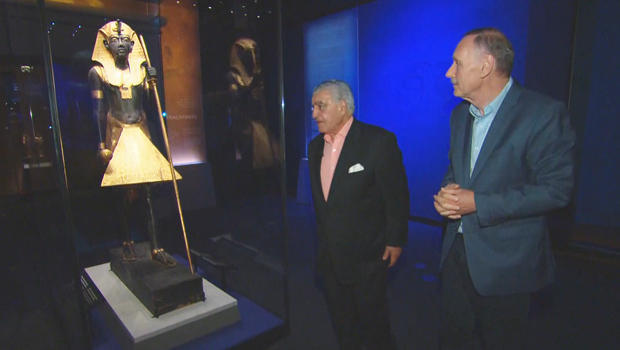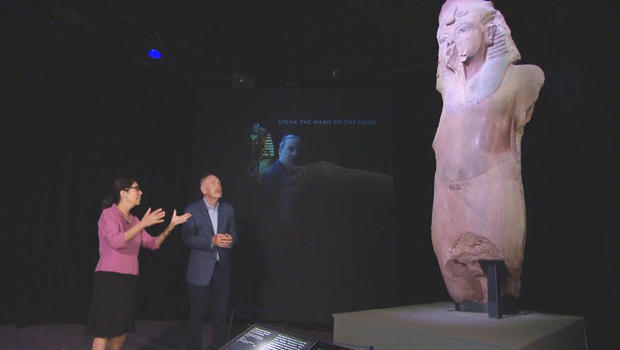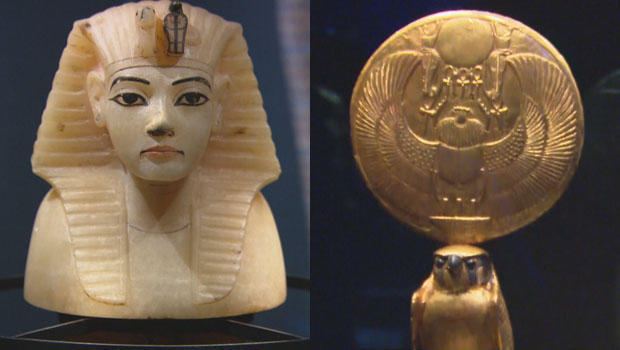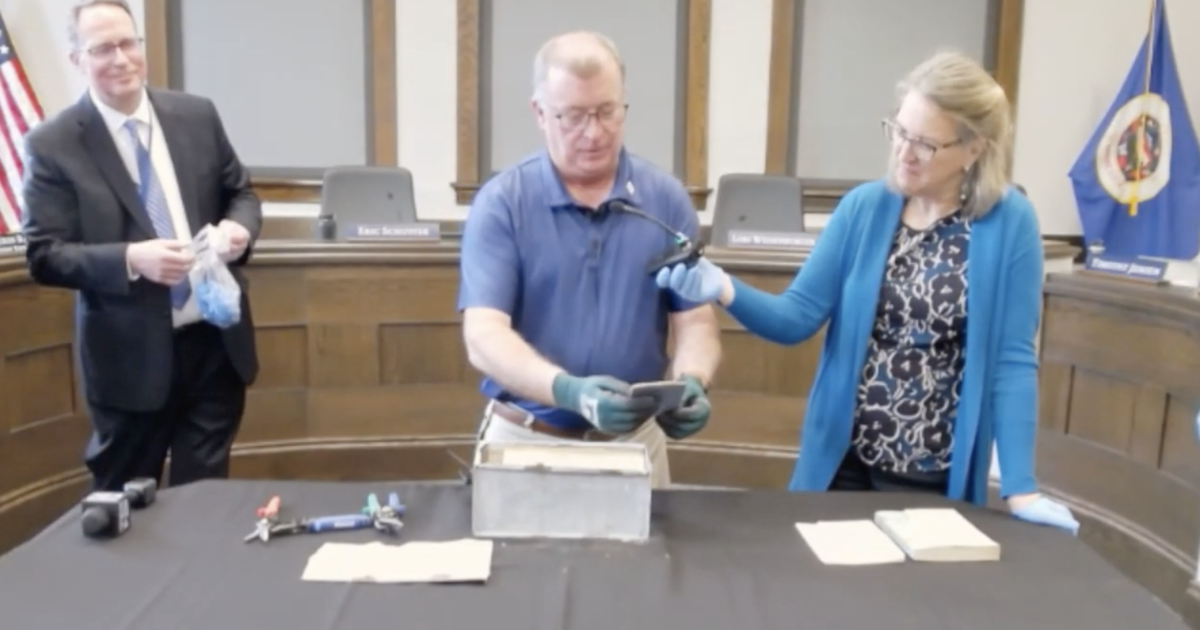The treasures of King Tut, on tour for the last time
At the California Science Center in Los Angeles, the young are coming to marvel at the old – the very, very old: the treasures of King Tut, more than 3,000 years old, and still gleaming.
Dr. Zahi Hawass, for years Egypt's most prominent archaeologist, helped organize this exhibit, which includes many objects from the tomb of King Tutankhamun that have never before left Egypt.
He described one artifact, a Guardian of Ka statue with a gilded head dress: "I think this is a masterpiece. The eyes, the black color of the statue, it shows fertility of the land of Egypt."
The school-age visitors may miss some of the symbolism, but the story of King Tutankhamun still fascinates. "King Tut was a boy king," said Diane Perlov, vice president of exhibits at the California Science Center. "He became king when he was nine years old, and he died when he was 19. So, children can identify with that."
Perlov showed correspondent John Blackstone a 10-foot quartzite statue of King Tut that was found at his mortuary temple. "What's interesting about this is that right after King Tut passed away, his successor, Ay, tried to destroy all remnants of his rule, including erasing King Tut's name from the belt of that statue and putting his own name.
"But they failed miserably, because few people have heard of King Ay, and the name of King Tut is essentially immortal."
And yet, he was not a particularly significant king of Egypt. "No, he was not," said Dr. Hawass. "Actually, if his tomb was not found, maybe we'll write three lines about him."
But famously, his tomb was found by British archaeologist Howard Carter in 1922. It was the richest pharaonic tomb ever found, and the only one that was found nearly intact.
More than 150 of the gleaming objects Carter found in that nearly-intact tomb are part of this exhibition, including alabaster cofinettes, six-foot-tall gilded wooden statues which guarded his tomb, and furniture for the boy king to use in the afterlife.
But they are still only a fraction of the 5,000 treasures discovered almost a century ago buried with King Tut. "And because of those 5,000 items that were found, he became an instant celebrity," said Perlov.
That celebrity grew to superstar status in the late 1970s, when more than eight million people viewed the first exhibition of Tutankhamun treasures to tour the United States.
"Tutmania" swept America – and enough made it onto "Saturday Night Live":
The star of that exhibit in the 1970s was Tutankhamun's golden burial mask. "Seeing that gold mask, it was absolutely breathtaking," said Perlov.
But that gold mask is not in the present exhibition. "No, it is too fragile, and Egypt doesn't let it outside of Egypt anymore," she said. "You have to go to Cairo to see that."
John Norman is in charge of packing and shipping the objects that are fit to travel. Blackstone asked him, "This is the heritage of Egypt. Is it a weight on your shoulders to be taking this around the world?"
"If I think too hard about that, it becomes a little daunting," Norman replied. "You know, insurance value doesn't really mean anything because you can't replace [them]."
Part of the proceeds from the exhibition will go to help complete the new Grand Egyptian Museum in Giza, which is intended to become King Tutankhamun's final resting place. The artifacts presently on tour have left Egypt for the last time.
"No artifact of King Tut will travel again; this is the last exhibit," Dr. Hawass said. "If anyone in the future want to see King Tut, he has to come to Egypt."
For more info:
- King Tut: Treasures of the Golden Pharaoh, at the California Science Center, Los Angeles (through January 13) | Get tickets
- King Tut: A Classic Blockbuster Museum Exhibition That Began as a Diplomatic Gesture (Humanities Magazine, Sept./Oct. 2015
Story produced by John Goodwin.






